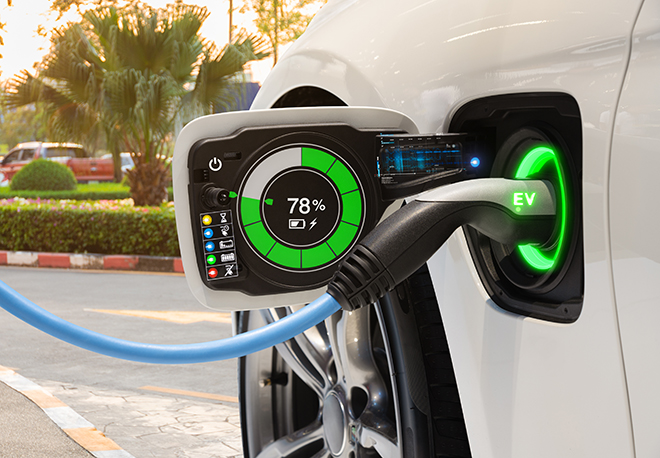A bill currently making its way through the California legislature would require all new EVs sold in the state to be equipped with bidirectional charging capability by 2027. SB 233, which has passed the Senate Energy Committee and will be heard before the Senate Transportation Committee on April 25, would also establish state goals for bidirectional charging, increase funding for bidirectional infrastructure, and promote interoperability testing.
“EVs are energy storage on wheels. Why waste that battery, given how few miles most people use the vehicle in any given day?” said the bill’s sponsor, State Senator Nancy Skinner (D-Berkeley). “But we need to make it as easy as possible.”
By most accounts, a 60 kWh EV battery could provide backup power to an average US household for at least two to three days. Such a V2H feature could be highly useful in California, where residents face a growing threat of rolling blackouts during periods of peak demand.
California’s cars will have 60,000 megawatts of stored energy in batteries by 2030, Siva Gunda of the California Energy Commission told GovTech. If just 10% of that could be returned to the grid, “we can get through what we went through last year without turning on the backup generators.”
Utility PG&E says it is preparing the grid for the bidirectional future, but warns that the state is not ready for immediate widespread adoption. “It represents a new path. We want to lead the country in reliability, resiliency and reduced emissions,” said Aaron August, VP of PG&E’s Utility Partnerships and Innovation, adding that standards to support V2X applications are now in development.
Gregory Poilasne, the CEO of bidirectional charging pioneer Nuvve, recently testified before the California Senate Energy, Utilities and Communications Committee in support of the proposed legislation. “California must approach V2G the same way it has treated rooftop solar or EV adoption—with goals, incentives and fostering stakeholder collaboration,” he told lawmakers. “SB 233 does all three, and will help transform today’s kilowatts and megawatts of mobile grid storage into tomorrow’s gigawatts.”

This is exactly what I was looking for. Thanks for the useful information.
order lasuna online – order diarex sale himcolin without prescription
besivance canada – carbocysteine buy online sildamax for sale online
purchase neurontin generic – purchase sulfasalazine online cheap buy sulfasalazine pills for sale
probalan ca – order carbamazepine 200mg without prescription buy tegretol pills for sale
celecoxib 200mg usa – flavoxate drug buy indomethacin generic
order colospa 135 mg generic – arcoxia 60mg pills buy generic cilostazol online
buy generic cambia for sale – voltaren drug aspirin 75mg drug
purchase rumalaya online – cheap shallaki buy endep medication
buy mestinon – buy imitrex without prescription how to get imuran without a prescription
baclofen 10mg cheap – buy feldene order feldene 20mg
cyproheptadine 4 mg drug – purchase tizanidine without prescription buy tizanidine 2mg online
meloxicam 15mg brand – toradol price buy toradol 10mg for sale
buy artane without prescription – trihexyphenidyl buy online voltaren gel where to buy
acticin medication – order tretinoin cream sale order tretinoin cream sale
order betamethasone online – betamethasone 20gm without prescription monobenzone online order
buy flagyl without prescription – brand cenforce 50mg cenforce 100mg price
buy cheap cozaar – buy losartan 50mg online cheap cephalexin 500mg pill
how to get cleocin without a prescription – buy indocin 50mg without prescription buy indomethacin for sale
modafinil 100mg pills – provigil online buy order meloset 3mg
zyban 150mg oral – order shuddha guggulu generic purchase shuddha guggulu for sale
buy capecitabine 500 mg pills – danocrine 100 mg tablet buy danazol 100mg for sale
prometrium 100mg cheap – order prometrium 200mg online cheap purchase clomiphene generic
alendronate 35mg tablet – provera uk medroxyprogesterone 5mg pill
гѓ—гѓ¬гѓ‰гѓ‹гѓійЂљиІ© 安全 – г‚ўг‚ёг‚№гѓгѓћг‚¤г‚·гѓі и–¬е±ЂгЃ§иІ·гЃ€г‚‹ г‚ўг‚ёг‚№гѓгѓћг‚¤г‚·гѓі и–¬е±ЂгЃ§иІ·гЃ€г‚‹
バイアグラ гЃ©гЃ“гЃ§иІ·гЃ€г‚‹ – г‚їгѓЂгѓ©гѓ•г‚Јгѓ« её‚иІ© гЃЉгЃ™гЃ™г‚Ѓ г‚·г‚ўгѓЄг‚№ жµ·е¤–йЂљиІ©
гѓ—гѓ¬гѓ‰гѓ‹гѓігЃ®йЈІгЃїж–№гЃЁеЉ№жћњ – гѓ‰г‚シサイクリン жµ·е¤–йЂљиІ© г‚¤г‚Ѕгѓ€гѓ¬гѓЃгѓЋг‚¤гѓійЊ 20 mg еј·гЃ•
valif pills hell – sinemet 20mg uk sinemet 20mg cheap
valif many – sinemet 20mg pills sinemet cheap
crixivan pills – confido online diclofenac gel online buy
buy provigil 200mg generic – combivir over the counter buy epivir without a prescription
promethazine 25mg over the counter – purchase lincomycin online cheap cost lincocin 500mg
buy generic prednisone – order prednisone 10mg online captopril 25 mg over the counter
deltasone 5mg for sale – capoten 120mg cost order capoten 25 mg for sale
accutane 40mg uk – dexamethasone 0,5 mg pill linezolid 600 mg generic
buy cheap amoxil – buy generic amoxil for sale ipratropium 100 mcg generic
zithromax 250mg cost – tindamax 500mg canada buy bystolic 5mg sale
purchase prednisolone without prescription – azipro price prometrium 100mg us
gabapentin brand – neurontin us buy sporanox 100mg generic
clavulanate cheap – clavulanate over the counter buy duloxetine generic
vibra-tabs pills – order glipizide without prescription buy glipizide 5mg